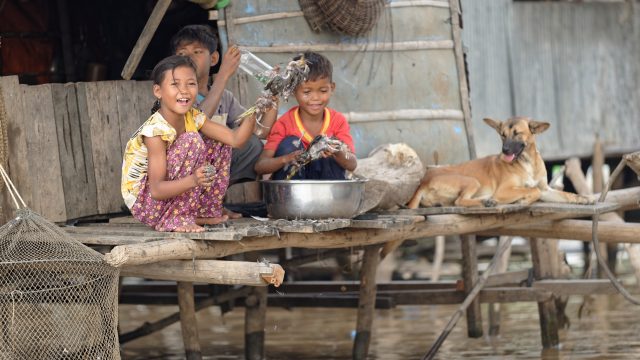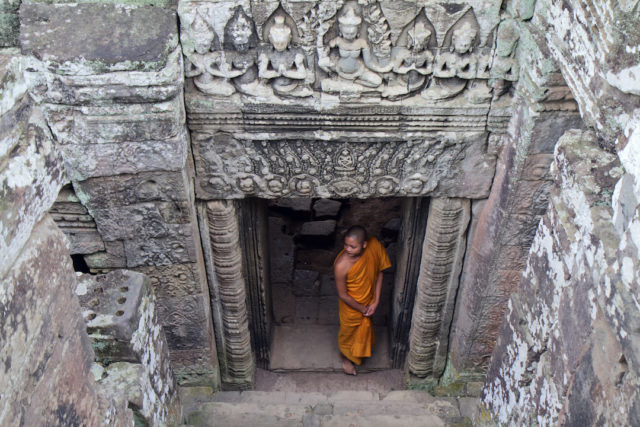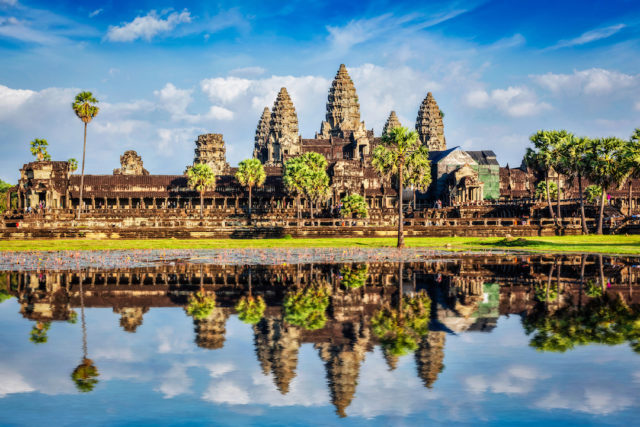From Buddhist Monks to Hindu Temples: Cambodian Culture for Family Travelers
ABOUT
At Our Whole Village, we plan meaningful vacations for families who want to create lifelong memories and show their kids the world in a more conscious and intentional manner.
WORK WITH US
We help families take meaningful vacations so that they can escape everyday life, show their kids the world and make lifelong memories - with care, confidence and peace of mind.
THE BEST FAMILY VACATIONS BY AGE
Your (free) guide to the top travel destinations for families with babies, teens and everyone in between.
DOWNLOAD NOW
ABOUT US
March 21, 2019
Shaped by the extremes of the monsoon season, Cambodia boasts an astonishing diversity of wildlife. Home to one of the most unique ecosystems in the world, the Mekong River winds its way through the verdant countryside, carving and molding the land as it feeds the great Tonlé Sap lake.
But Cambodia’s diversity doesn’t stop with the environment. Cambodian culture plays host to a variety of ancient traditions and peoples. Today, the Khmer comprise more than 90 percent of the population. There are also the Khmer Loeu of the Highlands, the Cham Muslims, and ethnic groups such as the Vietnamese and the Chinese.
Cambodia boasts a rich and ancient culture rooted in the Khmer culture, Buddhism, and even Hinduism. Let’s take a look at some essential things to know about this incredible country, steeped in centuries of history.
Language in Cambodia
The official language of Cambodia is the Khmer language. Used in most social settings, Khmer is spoken by about 90 percent of the population and used in all levels of education.
Modern Khmer is based on the dialect of the capital city Phnom Penh. Many Khmer words, especially those used in the military, administration, and literature, stem from Sanskrit or Pali.
Because of Cambodia’s past as a former colony of France, Modern Khmer also contains many French words. But English, rather than French, has come to dominate education and business as the second most studied and spoken language.

© Serban Enache | Dreamstime.com
Religion in Cambodia
Ninety-five percent of Cambodians are Theravada Buddhist. Theravada Buddhism draws inspiration from the Pali Canon (a.k.a. Tipitaka or Tripitaka), considered to be the earliest surviving record of the Buddha’s teachings.
Buddhist monks, known as bonzes, comprise a unique and highly respected social class in Cambodia. In fact, the Khmer language contains specific vocabulary for talking to and about Buddhist monks. How can you tell if you’re in the presence of Buddhist monks? By their iconic appearance featuring shaven heads and saffron-colored robes.
Besides bonzes, the other cornerstone of Cambodian Buddhism remains the wat or spiritual center. Between five and more than 70 bonzes may live at each given wat. Bonzes are divided into two classes, novices (a.k.a. nen or samani) and ordained monks or bhikku.

© Toby Williams | Dreamstime.com
Cambodia’s Hindu Heritage
Centuries have passed since Hinduism played a significant role in Cambodian daily life. But evidence of this rich past still marks the nation. Cambodia’s national treasure, the Angkor Wat Archaeological Park, remains the world’s largest Hindu temple. So, don’t be surprised to find Khmer versions of Hanuman and Ganesha gracing the park’s temples. You’ll also see bas-relief carvings pulled straight from the Sanskrit epic the Ramayana.
The Ramayana translates as the “Glory of Rama” and represents one of two major ancient Indian epics. These tales first came to Cambodia along with Hinduism between the first and fifth centuries AD. The Ramayana tells the epic tale of Rama (Ream in Cambodia) including his quest to reclaim his kidnapped wife, Sita (Neang Seda), from the demon king. Along the way, Rama is aided by Hanuman, the monkey warrior. These events come to life in carvings at Angkor Wat.
Other signs of Hindu influence include a collection of Hindu statues in the National Museum of Cambodia. The Royal Palace in Phnom Penh also boasts a sword said to be a gift from the Hindu deity, Indra, to the ancestors of the Cambodian royal family. What’s more, popular Cambodian names include Rama, Vidya, Devi, and Krishna, all evoking important figures and deities from Hinduism.

© Dmitry Rukhlenko | Dreamstime.com
The Richness of Cambodian Culture
Cambodian culture remains a rich melting pot of influences from ancient civilizations and religions. Although it has held strongly to Buddhist identity for nearly 700 years, Cambodia also proves deeply indebted to Hinduism. Many of its primary tourist destinations pay homage to Hinduism and show the markers of ancient Indian civilization. But Cambodia also proves a nation that’s rapidly modernizing. English is spoken, and tourists are warmly welcomed. This makes traveling Cambodia with kids a safe and enriching experience.
Are you and your family ready for the vacation of a lifetime? Why not put Cambodia travel at the top of your list? Check out our Thailand & Cambodia Family Adventure, a culturally rich, kid-friendly way to visit some of the most extraordinary destinations in Asia.
At Our Whole Village, we create transformational trips for curious families who want to create lasting memories while making a difference. We’re here to help you and your family experience the world, its peoples, and its cultures. Contact us today to learn more about the unforgettable experiences that we handcraft for curious families just like yours.
OUR SERVICES
HOME
COPYRIGHT © OUR WHOLE VILLAGE 2021
DESIGN BY GIRLBOSS DESIGNER | CUSTOMIZED BY ALEX COLLIER DESIGN
about
TRAVEL SERVICES
DESTINATIONS
BLOG
PLAN A TRIP
FREE TRAVEL GUIDE
TERMS AND CONDITIONS
hello@ourwholevillage.com
+1 305 432 2612